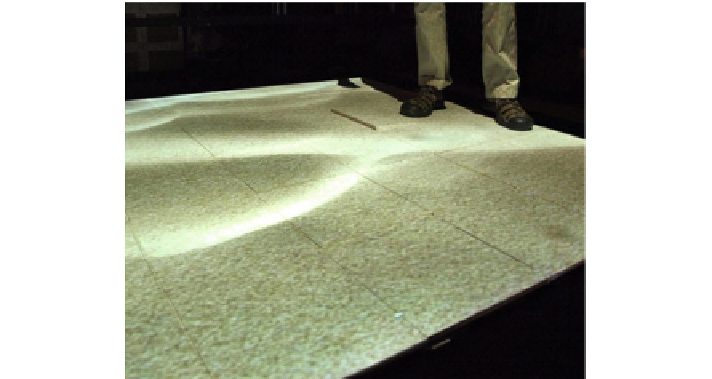Biomedical Engineering Reference
In-Depth Information
Fig. 17.1
A floor interface situated within an immersive, rear projected virtual environment
simulator
strategies that can be used for their technical implementation—notably for sensing
and multimodal feedback—and interaction techniques that can be employed with
them. Our discussion draws on known results from the research literature and from
the commercial domain. We also survey current and potential applications of such
floor-based displays, including a range of examples from prior literature, and discuss
in detail one set of case studies based on prior research of the authors, associated with
an interface based on a distributed network of low-cost, rigid floor tile components,
with integrated sensing and actuation.
17.2 Background
Foot-based human-computer interaction has attracted increasing attention as a para-
digm for interacting in virtual reality or in ambient computing environments. Some
potential application domains include architectural visualization, immersive mission
training, locomotor rehabilitation, and entertainment. Traditional techniques based
on traditional mouse click and scrolling, or finger-based multitouch gestures, may
be adapted for use with some of these displays. Interaction in immersive environ-
ments, or with other datasets distributed in the ambient space of the environment in
which users are situated, could also benefit from the naturalness and intuitiveness
with which we are accustomed to interacting on foot via unique walking or step-
ping behaviors. Additional benefits are possible by taking advantage of the relatively
greater number of degrees of freedom that underly bodily control of movement.
However, methods of interaction must also be chosen according to constraints of
computational task and context. Users of such environments can be presumed to need

